Willamette Pass is a 5,128-foot-high (1563 m) mountain pass in Oregon’s Cascade Mountains, connecting Central Oregon with the Willamette Valley. Though the pass was known to the native Molalla and Kalapuyan people who hunted and foraged in the area for thousands of years, the pass eventually became a toll-free route for emigrants known as the Free Emigrant Road in the 1850s.
Today, Highway 58 provides access for Nordic skiing and snowshoeing at the Willamette Pass Ski Resort and several sno-parks along the highway. In addition, there are numerous opportunities to explore the forests, waterfalls, and lakes in the area.
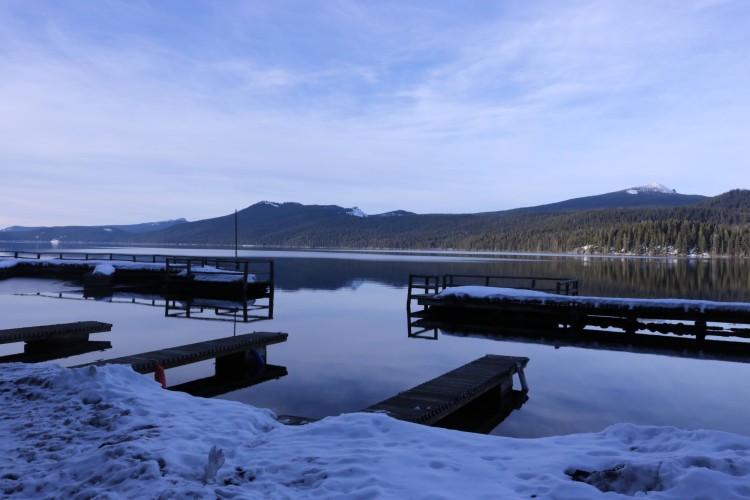
In addition to the sno-parks in the area, you can also access snowshoe trails and lake views at the Odell Lake Lodge and Resort. Photo: Damian Fagan
Gold Lake Sno-Park
Located 0.7 miles (1.1 km) west of Willamette Pass, the Gold Lake Sno-Park is a major hub for winter enthusiasts to go snowshoeing and explore both sides of Highway 58. From just this one sno-park, there are numerous trails, warming shelters, old-growth forests, and splendid vistas to keep skiers and snowshoers busy for days exploring this portion of the Willamette National Forest. As a note, some trails spill over into the Deschutes National Forest as the two forests border each other in this region.
The sno-park is also the base of operations for the volunteer-based Willamette Backcountry Ski Patrol. Volunteers staff the Gold Lake Patrol Cabin, which was built in 1986, providing information, trail maps, maintenance, friendly conversation, and rescue operations, if needed. There is also a restroom nearby in the parking area. For current information, check the patrol’s Facebook page. Due to COVID-19 and staffing issues, ODOT does its best to keep the sno-park plowed but check current conditions before visiting.
The two main areas accessed from this sno-park are the Gold Lake area to the north of the highway and Pengra Pass to the south.
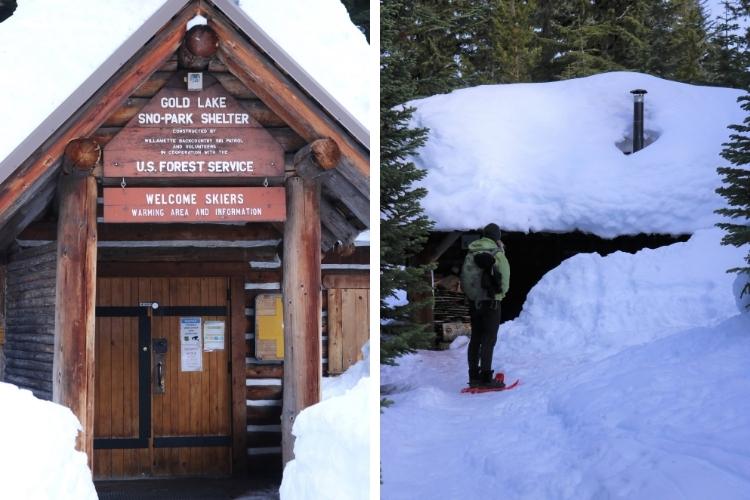
The Gold Lake shelter and Westview shelter are two shelters to check out in the Gold Lake Sno-Park. Photos: Damian Fagan
Gold Lake Area
For those heading to Gold Lake, skiers and snowshoers will have to walk across the highway before strapping on snowshoes or skis and heading up Gold Lake Road, also known as Forest Road 500, for about 2.0 miles to the 100-acre Gold Lake.
This trail is a relatively easy stroll for even newbies, passing through old-growth mountain hemlocks and other conifers. Near the lake’s outlet, a historic CCC warming shelter has picnic tables and is a great spot to get out of the weather. Though this and other area shelters are stocked with firewood by the Willamette Backcountry Ski Patrol, the intention is that the wood is for emergency use because it can’t be restocked in winter.
At various points along the Gold Lake Road, side trails lead to a series of shallow lakes, the Upper and Lower Marilyn Lakes. Both lakes are about 22-23 acres in size. They offer a nice rolling terrain option to reach Gold Lake off the main trail.
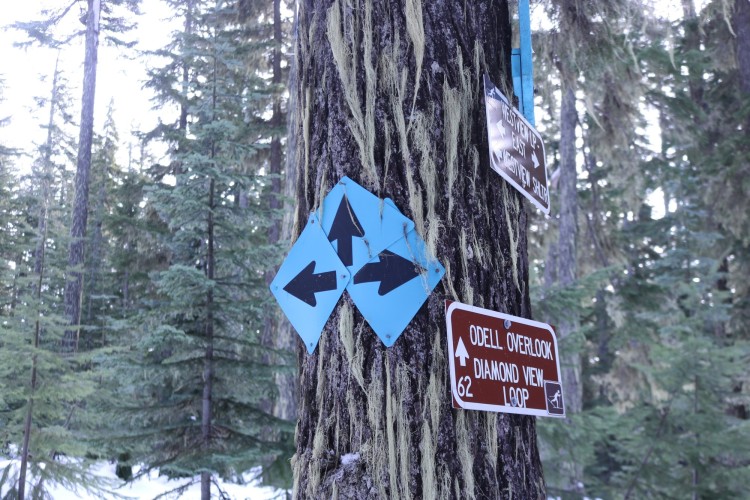
Follow the blue diamond markers to Odell Lake or Diamond View Loop in the Pengra Pass section of the park. Photo: Damian Fagan
Pengra Pass
At the Gold Lake Sno-Park, the closed Abernathy Road heads south towards Pengra Pass and other locations like the Bechtel and Westview shelters, Odell Overlook, and Midnight Lake. There are out-and-back or loop options of varying lengths, so remember to carry a map. Also, trail intersections are well marked and numbered, and the trails have blue diamond markers.
The trail to the three-sided Bechtel Shelter, named for pioneer Solomon Bechtel (1836-1915), has a small sleeping loft used by two- and four-legged creatures. It’s a 4.6-mile (7.4 km) out-and-back from the sno-park with about 150 feet of elevation gain.
Though a good destination, some snowshoers will continue past this shelter and connect with the Midnight Lake trail, located just inside the Diamond Peak Wilderness and off the Pacific Crest Trail. The 5.7-mile (9.1 km) loop with nearly 530’ of elevation gain returns to the sno-park via Pengra Pass, named for Byron J. Pengra (1823-1903), an Oregon emigrant, pioneer developer, and newspaperman who helped survey the Oregon Central Military Road up over the Willamette Pass area in the 1860s.
Another trail from Abernathy Road leads up to the Westview Loop, including the Westview Shelter and an overlook of Odell Lake at Eagle Rock for a 3.6-mile (5.8 km) out-and-back trail. From Eagle Rock, shoers may extend their return trip to the sno-park via Pengra Pass to the south or via the Diamond View loop to the north. Again, a trail map is paramount as there are numerous intersections in this trail system.
Read More: Snowshoeing Oregon’s Santiam Pass Sno-Parks
Salt Creek Falls Sno-Park
The Salt Creek Falls Sno-park is located 4.5 miles (7.2 km) west of the Gold Lake Sno-Park. Similarly, this sno-park offers access to areas on both sides of the highway.
Fuji Shelter and Diamond Peak
On the north side of the highway, snowshoers and skiers climb about 1500 feet as they trek up Forest Road 5894 to the Fuji Shelter. This shelter is roughly 4.0 miles (6.4 km) on this closed road through dense woods and reaches spectacular views of the massive Diamond Peak. Named for local pioneer John Diamond (1812-1902), this 8,744-foot-tall volcano dominates the skyline.
Built in 1987 by the Eugene Oregon Marine Service Unit and volunteers, this shelter may also be reached by a longer route via the Fuji Mountain Trail from either the Gold Lake or Waldo Lake sno-park. As with the other shelters in the area, pitching a tent or building a snow structure might be a better idea than sleeping in the shelter due to nighttime rambling rodents.
Salt Creek Falls
From the Salt Creek Falls sno-park, snowshoers may also walk the closed road to the summer parking lot at Salt Creek Falls. Beyond the kiosk and restrooms is a fenced overlook of the 286-foot-high Salt Creek Falls. Waterfall enthusiasts debate the ranking of these falls as one of Oregon’s highest, but their drop is impressive nonetheless. However, this out-and-back trail is about 1.5 miles long. A longer side trip along the Diamond Creek Falls Loop can add roughly another 3.0 miles to this “big trees and waterfalls” adventure.
Read More: Oregon Sno-Parks: History and Snowshoe Opportunities Near Mt. Bachelor
Other Areas to Explore
In addition to these two main sno-parks, snowshoe trails are accessible from the Odell Lake Lodge and Willamette Pass Ski Resort to Fawn Lake and Rosary Lakes.
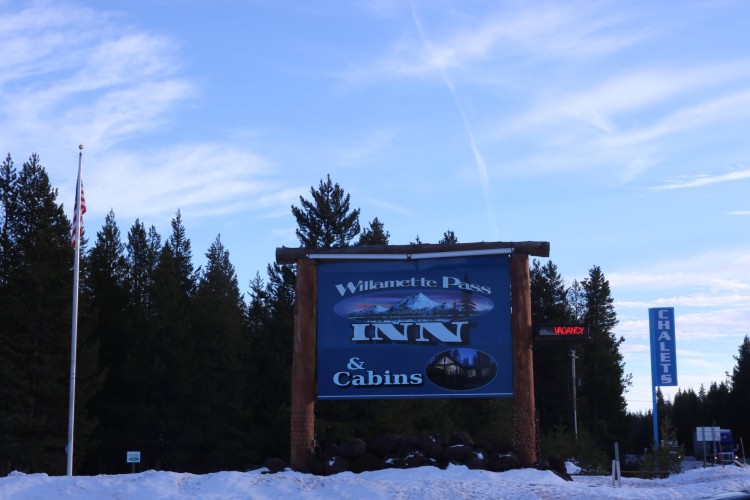
Willamette Pass Inn and Cabins has a main lodge, guest cabins, and a drive-through coffee hut close to completion. Photo: Damian Fagan
Après Ski
The Willamette Pass area offers several overnight accommodations for after your snowshoeing adventures, as well as places to eat.
Willamette Pass Inn and Chalets
The Willamette Pass Inn and Chalets, located east of the ski area at Crescent Lake Junction, has a main lodge and guest cabins. Their drive-through coffee hut is close to completion and will offer Sisters Coffee and other hot and cold drinks for travelers. Just a short walk away is Manley’s Restaurant. It may look a bit rough from the outside, but it offers good food and friendly staff. Try their specialty broasted chicken or shoot a game of pool while you’re waiting for your meal.
Odell Lake Resort
The Odell Lake Resort, located on the east shore near the lake’s outlet, has a lodge and numerous cabins that can accommodate parties from 1-16. They’ve added several new cabins and upgraded the others so that all of them have kitchens if you want to prepare your own meals. The N.W. Territory cabin, which can sleep up to 16, is the original lodge and has rooms with private bathrooms.
A quaint restaurant also provides delicious breakfast, lunch, and dinners to hungry winter travelers. A downstairs sitting room invites guests to hang out by the warming fire and share stories of the day with others or to sit and enjoy a good book while the snow falls.
Oakridge
Oakridge is about 22 miles (35.4 km) west of the Salt Creek Falls Sno-Park. It offers additional overnight and restaurant options such as Brewers Union Local 180 in downtown Oakridge or the Bluewolf or Cascade motels. The Westfir Lodge and Mountain Market, located across from the Office Covered Bridge, has nine guest rooms and is a very outdoor-activity friendly business. In winter, they even offer guided snowshoe trips to Salt Creek Falls.
Go Snowshoeing in Willamette Pass
Weekends may be busy at these sno-parks. But during the week generally, there will only be a few cars sharing the parking area. Snowmobile traffic takes off from the Waldo Lake Sno-Park and Salt Creek Falls Sno-Park, but their trails do not intersect with most of these snowshoe trails. Before driving up to the pass, it is recommended to check the Oregon ODOT Trip Check road cams or call 511 for current conditions.
So many possibilities, so little time!
By the Numbers
Willamette Pass: 5,128 feet
Gold Lake Sno-Park trails: Over 15 miles of marked trails
Salt Creek Falls Sno-Park trails: Over 13 miles of marked trails
Salt Creek Falls: 286 feet
Contact: Willamette National Forest, Middle Fork Ranger District, 541-782-2283
What other snowshoeing recommendations do you have for Willamette Pass in Oregon? Also, have you snowshoed any of the above areas? Please share your thoughts and experiences with us in the comments above.
Read Next: Snowshoeing Washington’s Cascade Mountains

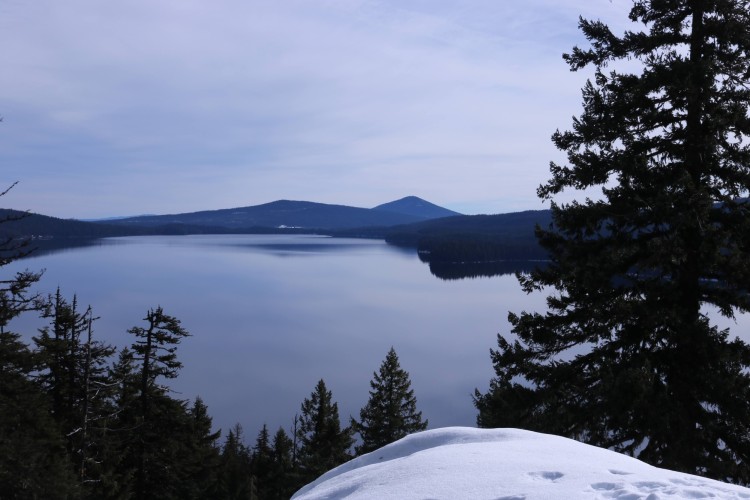
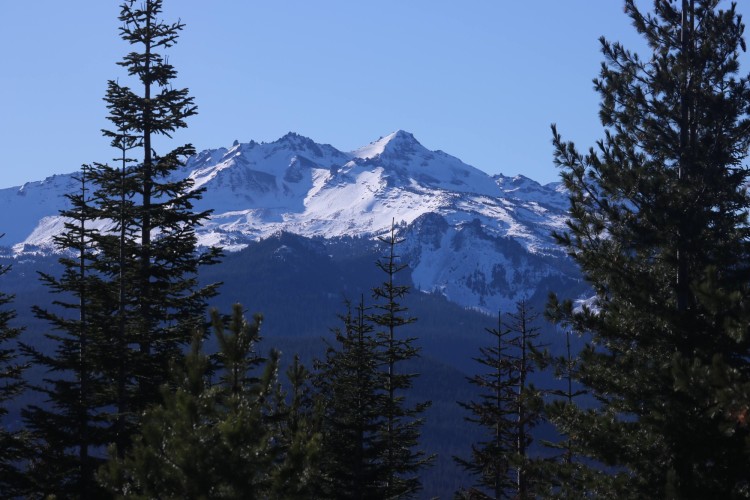
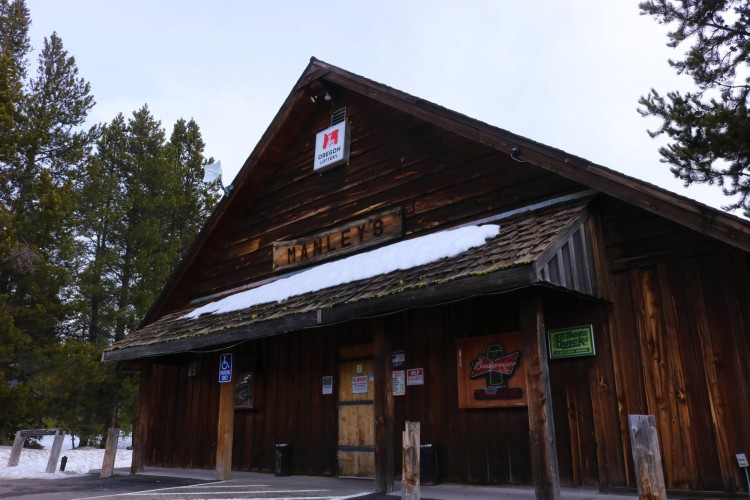
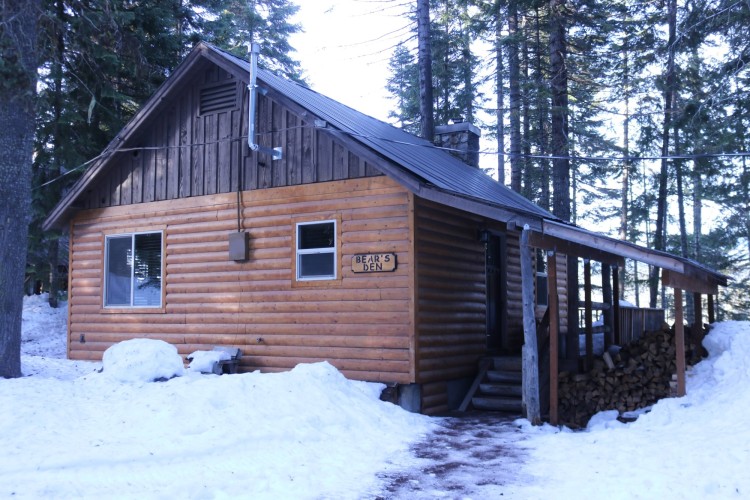
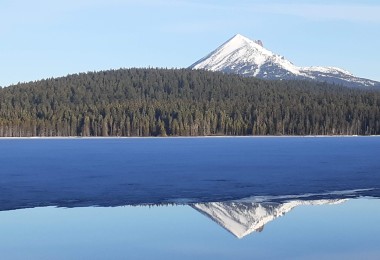
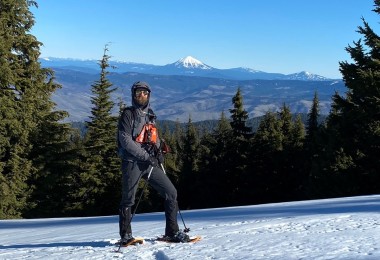
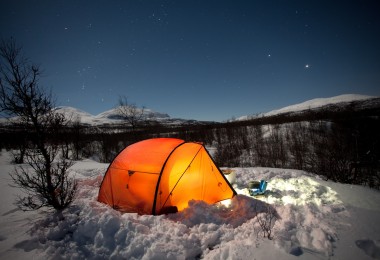
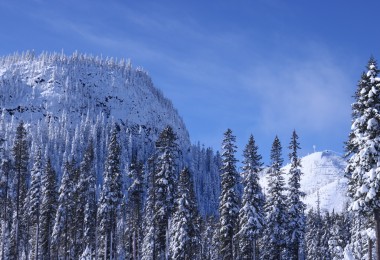

Leave a Comment